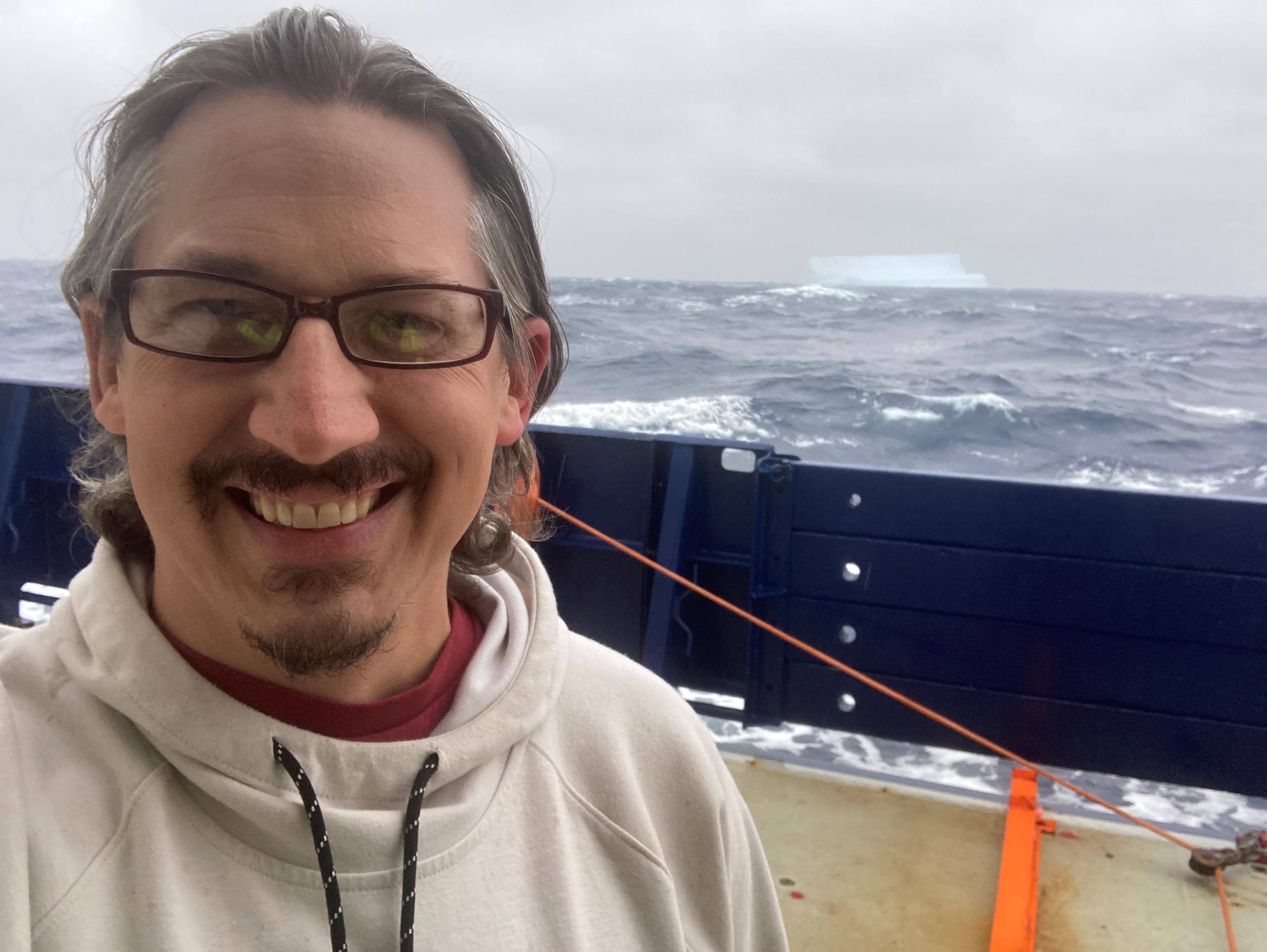Four questions with EOAS researcher Peter Morton

Peter Morton is a visiting assistant researcher of oceanography in the Department of Earth, Ocean and Atmospheric Science, part of the College of Arts and Sciences.
Your research focuses on chemical oceanography. Can you give us an overview of your work and share what a normal day of research at sea looks like?
I study the chemistry of nutrient metals in the ocean. These are just like the ingredients in a daily multivitamin: iron, zinc, copper, and others. The ocean is teaming with microscopic plants that depend on these nutrient metals to grow, but sources of nutrients to the ocean can be scarce, especially in the more remote regions. To understand how microscopic marine plants survive so far from land, we study the long-range transport of nutrients by wind and ocean currents.
My research is divided between collecting samples at sea aboard a research ship and analyzing the samples in the geochemistry labs at FSU and the National High Magnetic Field Laboratory. Research expeditions are intense, where we operate around the clock to collect seawater and aerosol samples, create miniature “garden” experiments using the seawater from a specific region of the ocean, and constantly exchange ideas and theories with the other scientists and students on board the ship. The science never stops, but there’s always a sense of excitement and enthusiasm, even when you’re completely exhausted. We make sure we have fun while we work, too: there’s always music playing, people use breaks in the research to compete in ping-pong or Mario Kart tournaments. On this last trip, one of the scientists taught classes on how to roast coffee. It’s definitely intense, but also very rewarding to participate in a research cruise.
Back at home, we focus on analyzing the samples collected at sea and interpreting the data. The instrumentation required to analyze these samples is very sensitive and requires a carefully controlled environment that cannot be reproduced aboard a ship. Therefore, most of our analyses are performed in special clean laboratories that are supplied with ultrafiltered air to prevent any possibility of contamination. Under these conditions, we can measure both the nutrients in seawater as well as the nutrient content in plants, and comparing these measurements helps us understand which nutrients are plentiful and which are scarce. We interpret these results, consult with our fellow scientists about how all the pieces fit together, and then share our findings as written publications and as scientific presentations at conferences and other universities.
What brought you to FSU as a visiting assistant researcher?
I was amazed at quality of the laboratories and instruments in the Geochemistry division at the MagLab, but the professionalism and friendliness of the other scientists and students was what really impressed me about FSU. There are dozens of scientists working on as many projects at the same time, but what makes conducting science at FSU so successful is how conscientious everyone is of their colleagues’ research. I appreciate the spirit of camaraderie and respect people have for each other, even when the projects might be completely unrelated.
You’ve worked with biology student Lauren Hearn on nutrient composition research. How does your research benefit from interdisciplinary collaboration?
The study of nutrient metals is truly interdisciplinary, requiring the expertise of many specialized scientists. I frequently work closely with physical oceanographers, who study the movement of nutrients by ocean currents, and marine microbiologists, who study the nutritional requirements of the many different species of marine plants. I can only tell one small part of the story of how life succeeds in the ocean, so working with scientists and students from other disciplines gives a more complete picture of marine biogeochemical cycles. Lauren is pursuing a degree in marine biology and my specialty is marine chemistry: Our perspectives are different but complementary, and by combining our education and experiences, together we can develop better interpretations of ocean processes.
Is there anything else you’d like to add?
FSU and the MagLab have created a learning environment where both students and faculty benefit from undergraduate research experiences. I am so impressed at the quality of students who have worked with me over the past few years. Each student is unique, with a different background and different career goals, but all of them have been motivated, inquisitive and hard-working. I’d encourage undergraduates to explore education opportunities outside the classroom by applying for internships at FSU or the MagLab.

